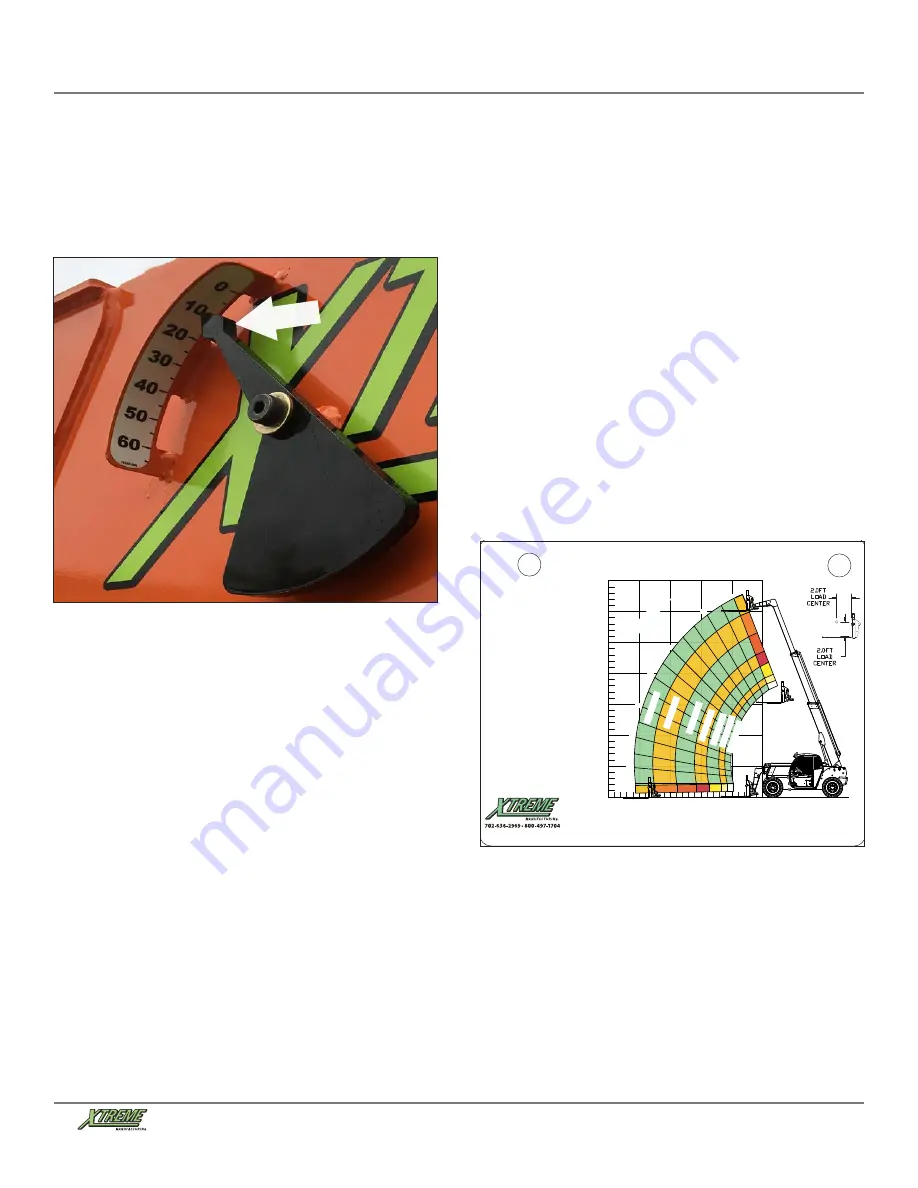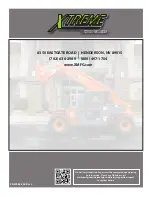
Operation Manual
65
XR630
Operation
The boom angle indicator is located on the left side of the
boom and is visible from the operator’s seat. Use the boom
angle indicator to determine the boom angle when referring
to load capacity charts.
NOTE:
The boom angle indicator is a plumb arrow with
angular graduations from -2.30 to +690.
Fig 92. Boom Angle Indicator
Reading Load Capacity Charts
To accurately read the load capacity charts, you must
determine three (3) things:
•
Weight of the load being lifted
•
Height of structure where load is to be placed
•
Distance from front tires where load will be placed
Fig 93. Load Capacity Chart
For example:
1. The operator determines load weight and makes sure
load does not exceed fork, attachment, or boom capacity.
The weight is 2,130 pounds (966 kg).
2. The operator safely moves the load to a loading position.
•
Places forks under load
•
Tilts and raises load safely
•
Fully retracts boom
•
Drives Telehandler to position perpendicular to
structure
3. The operator determines height of structure where load
is to be placed.
The structure height is 11 feet (3.35 meters)
from ground level.
4. The operator determines distance from front tires where
load will be placed.
The distance in front of Telehandler
where load will be placed is 12 feet (3.66 meters).
5. Operator reads load capacity chart for attachment
carriage to learn it will be safe to place the load
at any
boom angle with the boom extend letter “E” showing.
REACH (FT)
HEIGHT (FT
)
5
0
25
20
15
10
0
5
10
15
20
25
30
35
G
F
E
D C B A
G
F
E
D
C
B
A
50°
45°
40°
35°
30°
25°
20°
15°
10°
5°
0°
BOOM ANGLE
55°
60°
65°
68°
1,300 LBS
1,550 LBS
2,200 LBS
3,200 LBS 4,100 LBS
4,500 LBS
6,000 LBS
XR630 LOAD CHART - STANDARD CARRIAGE
3,000 LBS AT 24 IN
MIN CAPACITY FORK
(6,000 LBS PAIR).
P/N 10011170
LOAD RATINGS ARE
FOR VEHICLE EQUIPPED
WITH AIR FILLED TIRES.
LOAD RATING INCLUDES
WEIGHT OF ANY RIGGING




































